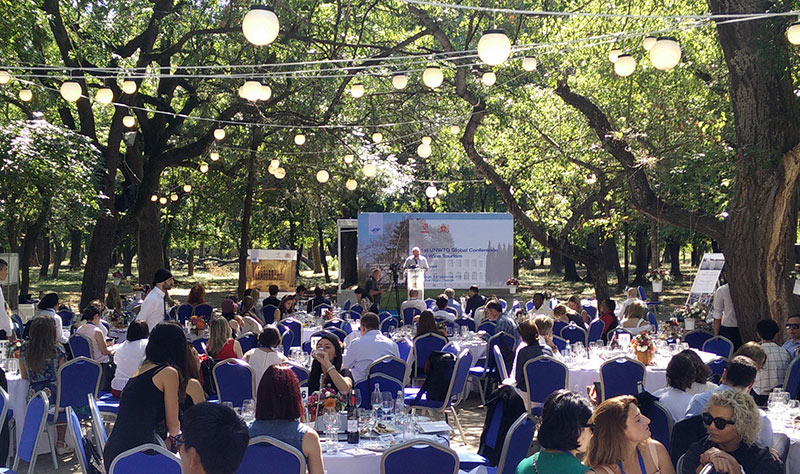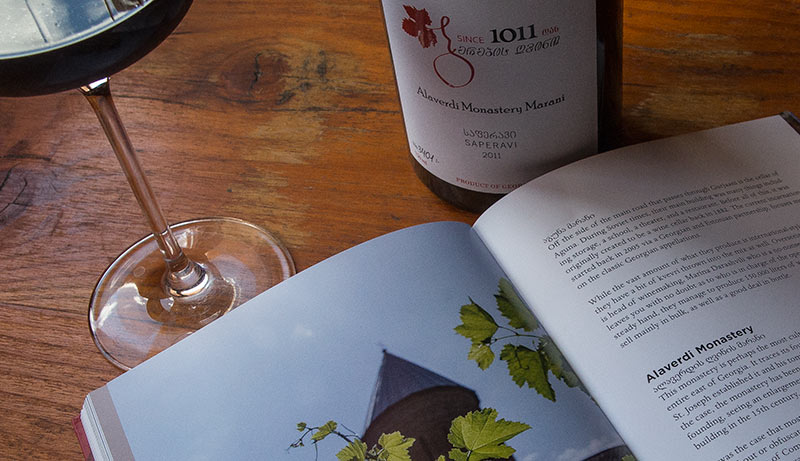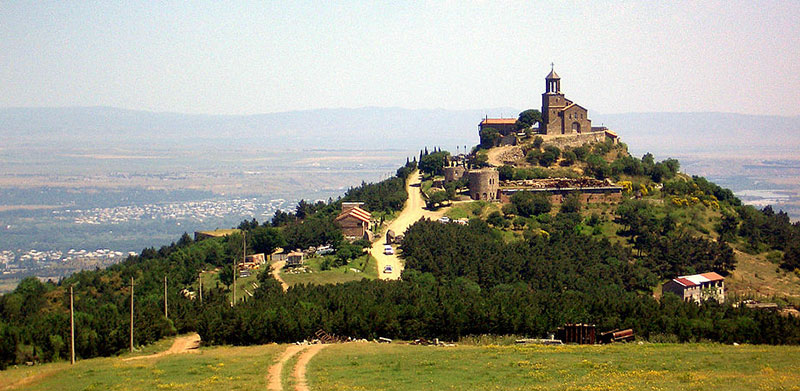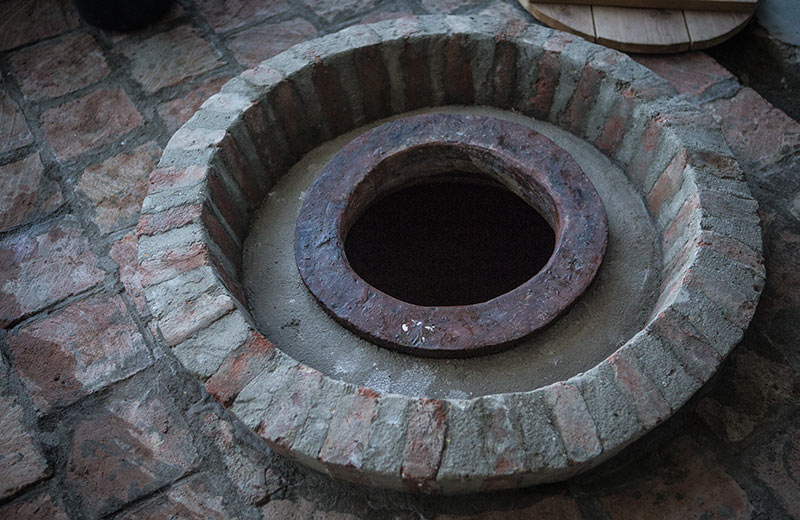After finishing up the bulk of research for a new Georgian wine book, from September 7-9th I attended the first annual Wine Tourism Conference, organized by the United Nations World Tourism Organization. Georgia was chosen for the setting because as Secretary General, Taleb Rifai stated on the first evening, “Georgia is the birthplace of wine.”
There were 42 countries represented at the conference and despite being billed as fully taking place in Georgia’s main wine region, Kakheti, the conference ultimately took place there as well as in Kartli which is much closer to the capital, Tbilisi.
Starting with the opening remarks at the inaugural dinner, it quickly showed the unenviable difficultly Georgia faces in communicating its wines to the general public. While various speakers made repeated mention of the “8,000 vintages” of history that archaeological evidence has verified, at the table attendees were served mass-produced wines by a large “wine factory” that was founded during Soviet times and makes reliable, cost-conscious wines using what the Georgians call, “European technology”. Needless to say, these wines are not representative of Georgia’s millennia-old wine heritage with one even appearing to be a non-vintage red.
As large-scale production comprises approximately 98% of the total annual wine output of Georgian wine, it wasn’t surprising that what was served to guests followed a similar theme the other two days featuring wines from similar “wine factories”. At the traditional Alaverdi Monastery, people were allowed to taste an older vintage of one white wine made in the traditional kvevri method but it left attendees confused as some found it to be flawed.
Georgian wine authorities are currently having to promote these two vastly different styles of wine: one that is a remnant of the Soviet Era’s theme of massive production and the other, ancient method that runs completely contrary to large production. As seen, these traditional wines can be difficult to present to a large audience as many kvevri wineries lay claim to 0.5ha or less of vines and presenting to a group of attendees that numbered over 200 is all but impossible as they simply don’t have the production needed, yet. And while some of the “wine factories” have started to produce their own line of kvevri wines due to great international interest, their number of bottles is still nascent.
The Wine Tourism Conference for 2017 is scheduled to be held in Mendoza, Argentina and those in attendance stated they would be curious to see if some of these issues, including the very short speaking format for the sessions, will be improved upon.



